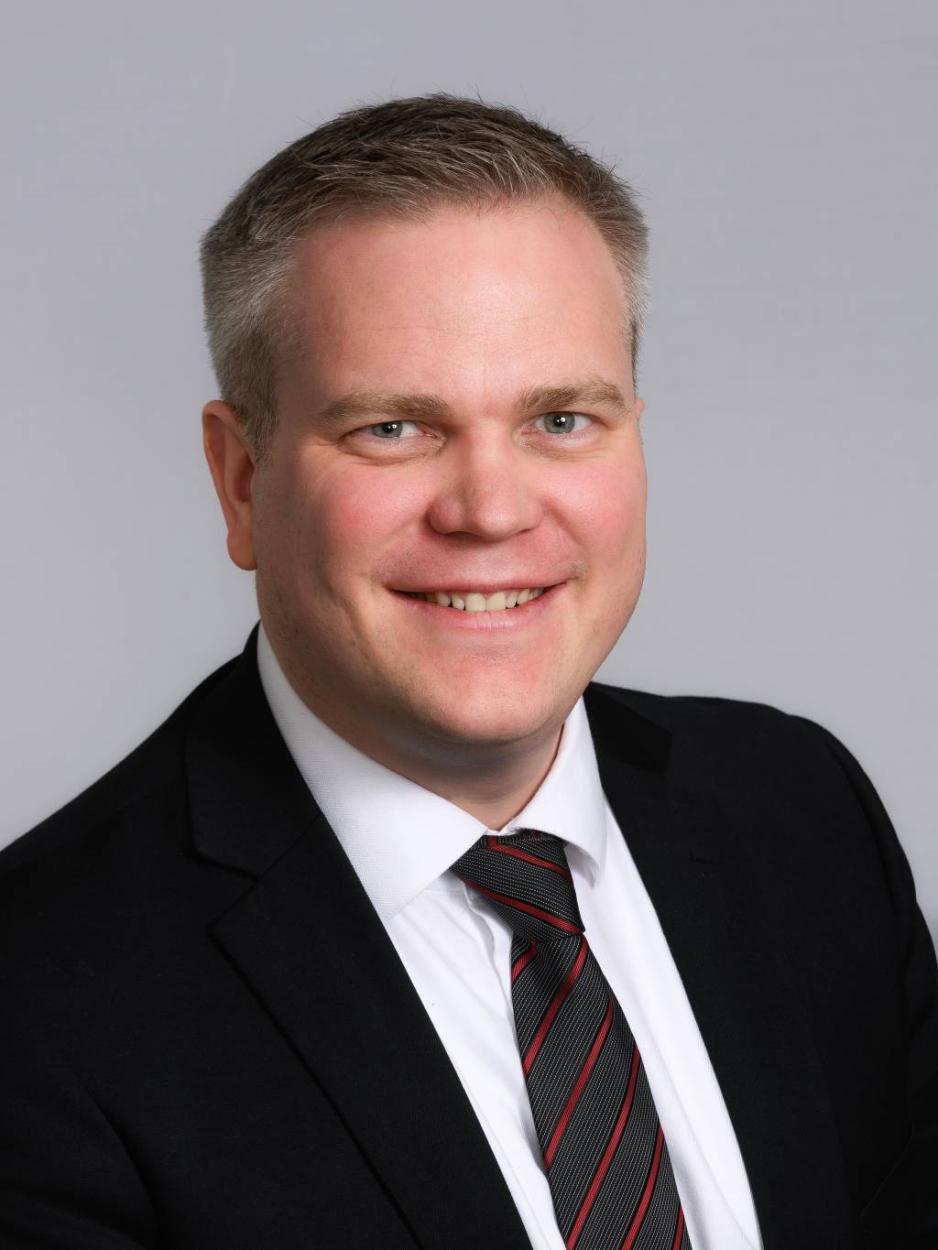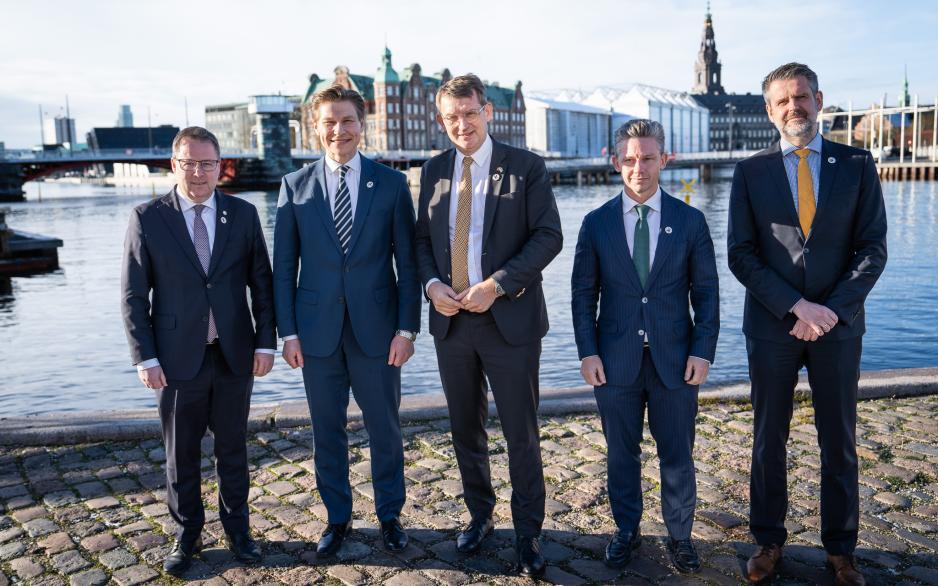Nordic Defense Cooperation is Becoming Even More Tangible

The Nordic ministers of defense signs a Letter of Intent to express their commitment to the establishment of harmonized military corridors in the region. From left: Denmark’s MoD Troels Lund Poulsen; Finland's MoD Antti Häkkänen; Martin Eyjólfsson, Director General, Iceland's Ministry of Foreign Affairs; Norway's MoD Bjørn Arild Gram – and Sweden's MoD Pål Jonsson. (Photo: The Danish Ministry of Defense)
The Nordic Ministers of Defense will strengthen operational cooperation, enhance military mobility, and initiate drone collaboration. "These measures concretize the Nordic countries' efforts to be able to carry out joint military operations if deterrence fails," says professor.
The Nordic MoDs recently met in Copenhagen to take stock and discuss how to further strengthen the Nordic Defense Cooperation (NORDEFCO).
"Russia’s aggressive behavior and its aggression against Ukraine remains a serious and long-term threat to Nordic, European and Global security. Against this backdrop, the ministers agreed that Nordic defense cooperation stands stronger than ever before," they say in a joint statement.
The ministers welcomed the new joint Nordic defense concept signed by the Chiefs of Defense in September, through which they agreed to strengthen military operational cooperation.
New initiatives were also launched at the meeting. The ministers signed a letter of intent on enhanced cooperation on military mobility – and initiated interaction on the development and acquisition of drones.
In addition, they will increase the production of ammunition in the Nordics, also considering Ukraine's acute need.
Joining forces in a new reality
“These measures concretize the Nordic countries' efforts to be able to carry out joint military operations if deterrence fails. They strengthen the Nordic region's ability to ensure its own security, and contributes also to NATO's collective defense capabilities," comments Håkon Lunde Saxi, Professor at the Norwegian Defence University College, to High North News.

Håkon Lunde Saxi, Professor at the Norwegian Defence Command and Staff College. (Photo: The Norwegian Defence University College)
Overall, these are new steps in realizing NORDEFCO’s vision 2030, which was launched this spring.
"The new vision updates the collaboration to a new reality in which all the Nordic countries are now NATO allies. At the same time, it enhances the focus on credible deterrence and defense capabilities through strengthening the countries' interoperability in war," Saxi points out and continues:
"Improving the capabilities to conduct multi-national military operations together and also with other NATO countries – including through improving joint plans – is the most important part of the vision. The vision launched in 2018, Vision 2025, practically focused on the same, but it is now far clearer, more specific, and within the NATO framework. This illustrates that cooperation can now be built on a hard, shared security guarantee through NATO."
Military mobility in the region
More specifically, the aforementioned letter of intent concerns making it easier to move military forces quickly and efficiently between the Nordic countries – both in peacetime and in times of crisis and conflict.
"It is crucial that we can receive and move allied forces through the Nordic region as quickly and efficiently as possible if needed. The development of military transport corridors will strengthen NATO's defense and deterrence capabilities," says Norway's MoD Bjørn Arild Gram (Center).
The agreement entails that the countries will develop planning, procedures, and systems for information exchange so that troop, equipment, and supply transport will be smoother.
A joint Nordic working group will assess and propose solutions for harmonizing border crossing regulations, as well as for coordinating access to military and civilian transport resources.
The working group is also to propose solutions for how the Nordics can cooperate on future infrastructure development that supports military needs.
In June, the President of Finland and the Prime Ministers of Norway and Sweden agreed to establish a military transport corridor across the Cap of the North.

“The Nordic defense cooperation is undergoing important progress and contributes substantially to NATO’s efforts in the region and Ukraine’s fight for freedom. There is great potential in this cooperation, and the political will is therefore present,” says the Danish MoD Troels Lund Poulsen (V), host of the ministerial meeting under Denmark’s chairship of NORDEFCO. (Photo: The Danish Ministry of Defense)
Coordinated vis-à-vis Trump
In the Copenhagen meeting, the MoDs also discussed the possibility of strengthening cooperation with the incoming US President Donald Trump and his administration.
"The ministers underlined the importance of the transatlantic relationship and delivering on NATO’s capability targets, including where possible through multinational solutions," the joint statement reads.
"Strengthening the Nordic region's relationship with the US, including through a close Nordic-American security policy dialogue, has been a recurrent theme for many Nordic countries throughout their chairships of NORDEFCO. The Nordic countries will attempt to preserve and strengthen these relations also with an incoming Trump administration," says Saxi and continues:
"To succeed with this, it will be important to showcase that the Nordics contribute to ensuring their own and joint security, as well as to demonstrate that the US has much to gain from the cooperation. The Trump administration will be transactional, concerned with getting 'something for something', particularly economically. Showing that the Nordics invest in the US and are making large purchases of American goods and services will be the way to do that."
Also read (the article continues)
Civil preparedness and total defense
The defense ministers also underlined the importance of Nordic cooperation on civil preparedness and total defense in support of NATO's deterrence and defense.
In this regard, they pointed forward to this week's meeting in Oslo, Norway, between the Nordic ministers responsible for civil protection and emergency preparedness.
A central topic of discussion at this meeting was increased Nordic civil-military cooperation, as all countries are now NATO members.
"It is important that the Nordic countries create a foundation for close civil-military cooperation across our national borders. Together, we can more effectively support national defense, while also safeguarding the fundamental functionality of civil society and protecting the civilian population," says Norwegian Minister of Justice and Public Security Emilie Enger Mehl (Center).
"We must be prepared for threats of all kinds, with joint planning of civil preparedness and cooperation between Nordic civil authorities that corresponds to arrangements already in place for military defense. This includes such aspects as learning from one another and engaging in joint exercises," states Finnish Interior Minister Mari Rantanen (Finns).

The Nordic ministers responsible for civil protection and emergency preparedness met in Oslo on Thursday within the framework of the Haga Process, which coordinates cooperative work in the field of civil security and emergency management among the Nordics. The meeting marked the close of Norway’s 2024 chairship of the Haga Process (Photo: Petter Hagman/Government Offices of Sweden)
Dual Finnish chairship
In 2025, Finland will take over the chairship of both NORDEFCO and the Haga Process.
Finland's stated ambition for the Haga Process chairship is to promote closer interaction between civil preparedness authorities, strengthen civil-military cooperation, and foster other interagency collaboration.
Regarding the incoming Finnish leadership of the Nordic defense cooperation, professor Saxi holds the following expectations:
"Finland will likely carry on the main lines from Vision 2030, focusing on operational military cooperation. Getting all the Nordic countries under the same operational NATO headquarters, the Joint Force Command in Norfolk, USA, and the same regional defense plan will be important in 2025."
"It will also be important to start the work of establishing the new NATO headquarters in the Nordic region for land and air operations and begin building the new NATO-led land force in Northern Finland," he maintains.
• In June, Finland received political support from NATO's ministers of defense to establish a NATO Forward Land Force (FLF) and a NATO Multi Corps Land Component Command (MCLCC). The FLF is expected to be located in northern Finland while the MCLCC is proposed to be co-located with the Finnish Army Command in Mikkeli, southeastern Finland.
• The allied MoDs also approved organizing Finland and the other Nordic countries under Joint Force Command Norfolk, NATO's newest operational command. The final formal decision has not yet been made on this matter.
• NATO is considering establishing a Nordic or Arctic Combined Air Operations Centre (CAOC). Norway has expressed its interest in hosting this centre. The Norwegian government will consider a specific location if such a centre is decided to be realized and allocated to Norway, according to MoD Gram.






